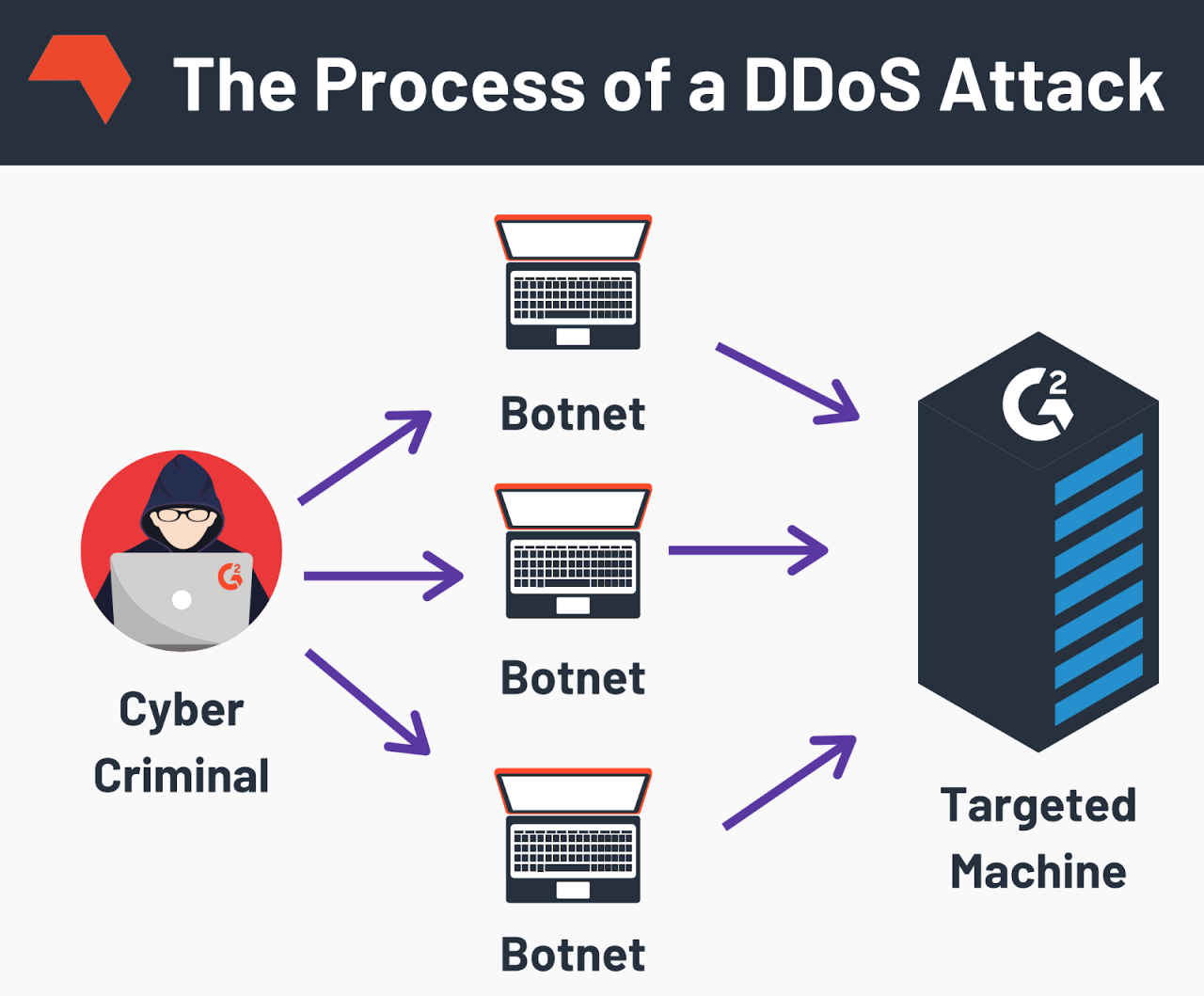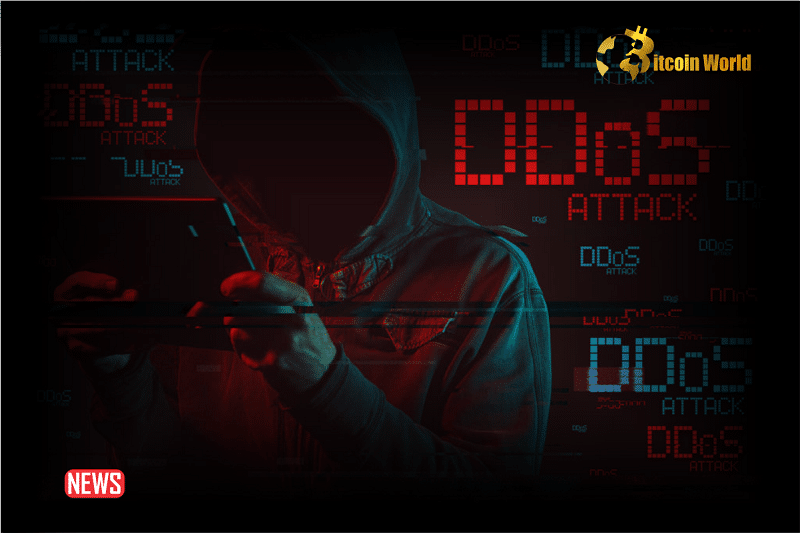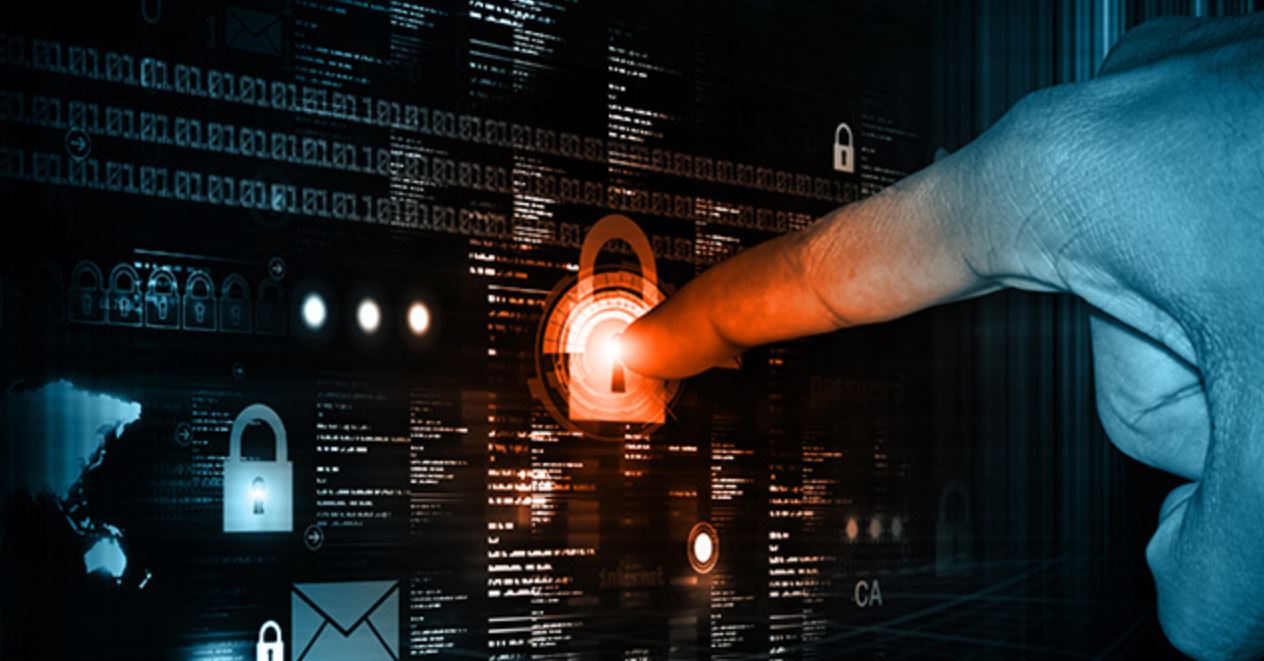
DDoS Cyber Attack on Wikipedia A Deep Dive
DDoS cyber attack on Wikipedia – the very thought sends shivers down the spine of anyone who relies on the free encyclopedia. Imagine the digital blackout: millions unable to access information, research grinding to a halt, and the collaborative spirit of Wikipedia stifled. This isn’t just a hypothetical scenario; it’s a very real threat, and understanding the methods, defenses, and consequences is crucial.
This post explores the potential devastation of a large-scale DDoS attack on Wikipedia, examining the vulnerabilities, the protective measures in place, and the potential societal impact of such a digital siege.
From volumetric floods overwhelming servers to application-layer attacks crippling functionality, the potential attack vectors are numerous and sophisticated. We’ll delve into the specific techniques used in these attacks, exploring how they might target Wikipedia’s infrastructure and the devastating consequences for users and the global community. We’ll also examine Wikipedia’s existing defenses, including the critical role of CDNs like Cloudflare, and propose potential improvements to bolster their resilience against future threats.
Defining the DDoS Attack on Wikipedia

A Distributed Denial-of-Service (DDoS) attack on Wikipedia would be a significant event, potentially crippling one of the world’s most important sources of information. Imagine a scenario where millions of requests flood Wikipedia’s servers, overwhelming their capacity to handle legitimate user traffic. This isn’t a hypothetical threat; Wikipedia has faced numerous smaller-scale attacks in the past, demonstrating its vulnerability.
A large-scale attack, however, could have far-reaching consequences.The scale and impact of such an attack would depend on its intensity and duration. A sustained, massive DDoS could render Wikipedia completely inaccessible for hours, days, or even longer. The consequences for users would be immediate and widespread: inability to access information, disruption of research, educational setbacks, and a general loss of access to a vital public resource.
For Wikipedia itself, the consequences would include reputational damage, financial losses, and the potential for data loss if the attack compromises server integrity. The sheer volume of traffic could cause significant financial strain from increased server costs and potential downtime.
Methods of Launching a DDoS Attack on Wikipedia
Several methods could be employed to launch a devastating DDoS attack against Wikipedia. These attacks leverage the power of many compromised devices, often referred to as a botnet, to flood the target with traffic. One common method is a volumetric attack, which overwhelms the target with sheer volume of requests. This could involve flooding Wikipedia’s servers with massive amounts of UDP packets, exploiting vulnerabilities in its network infrastructure.
Another method is a protocol attack, such as a SYN flood, which targets the connection process itself, preventing legitimate users from establishing connections. This type of attack exploits the TCP three-way handshake, sending a large number of SYN requests without completing the connection. Furthermore, application-layer attacks could target specific Wikipedia services, such as search or editing functions, using malicious requests designed to consume server resources.
The complexity of these attacks varies; some are relatively simple to execute, while others require sophisticated technical knowledge and resources. The 2016 Dyn DDoS attack, which targeted several major websites, serves as a real-world example of the devastating impact a sophisticated DDoS attack can have on internet infrastructure. That attack utilized a massive botnet to launch a multi-vector attack, resulting in widespread outages.
Attack Vectors and Techniques

A successful DDoS attack on Wikipedia, or any large-scale website, relies on exploiting vulnerabilities in its infrastructure and leveraging various attack techniques. Understanding these vectors and methods is crucial for both defending against such attacks and comprehending their potential impact. The sheer scale and global reach of Wikipedia make it a particularly attractive, yet challenging, target for malicious actors.Wikipedia’s infrastructure, like any large website, is susceptible to a variety of attacks.
These vulnerabilities often stem from the complexity of its network, the sheer volume of traffic it handles, and the interconnectedness of its various services. The attack surface is vast, encompassing everything from its DNS servers to its web servers, databases, and content delivery networks (CDNs).
Types of DDoS Attacks
Different DDoS attack types target different layers of the network stack. Volumetric attacks flood the target with massive amounts of traffic, overwhelming its bandwidth. Protocol attacks target specific network protocols, disrupting communication and causing network instability. Application-layer attacks target specific applications or services, disrupting their functionality. Each type requires different mitigation strategies.
Examples of Attack Vectors and Mitigation Strategies
The following table illustrates specific attack vectors, their targets, methods, and potential mitigation strategies. Remember that effective DDoS mitigation often involves a multi-layered approach combining various techniques.
| Attack Type | Target | Method | Mitigation |
|---|---|---|---|
| Volumetric Attack (UDP Flood) | Network Bandwidth | Sending a massive amount of UDP packets to exhaust bandwidth and resources. | Rate limiting, traffic filtering, scrubbing centers. |
| Protocol Attack (SYN Flood) | Network Connections | Exploiting the TCP three-way handshake to exhaust server resources by sending numerous SYN requests without completing the connection. | SYN cookies, rate limiting, intrusion detection systems (IDS). |
| Application-Layer Attack (HTTP Flood) | Web Server | Flooding the web server with a large number of HTTP requests, overwhelming its processing capacity. | Web application firewalls (WAFs), load balancing, content delivery networks (CDNs). |
| Application-Layer Attack (Slowloris) | Web Server | Sending many incomplete HTTP requests to tie up server resources. | Rate limiting, connection timeouts, WAFs. |
| Reflection/Amplification Attack (DNS Amplification) | DNS Servers | Exploiting DNS servers to amplify the attack traffic by sending requests to open resolvers, which respond with larger replies to the target. | DNSSEC, rate limiting, filtering traffic from known malicious sources. |
Wikipedia’s Defense Mechanisms
Wikipedia, facing the constant threat of DDoS attacks, relies on a multi-layered defense strategy to ensure its accessibility and stability. These defenses are crucial for maintaining the free and open nature of the online encyclopedia, protecting it from malicious actors aiming to disrupt service. The approach involves a combination of proactive measures, reactive responses, and partnerships with leading cybersecurity companies.Wikipedia’s security measures are not publicly detailed in their entirety for obvious reasons—revealing specific techniques could potentially aid attackers.
However, based on public information and the general knowledge of DDoS mitigation strategies, we can discuss the general approaches used.
Cloudflare’s Role in Wikipedia’s Security
Cloudflare, a prominent Content Delivery Network (CDN), plays a vital role in shielding Wikipedia from DDoS attacks. CDNs like Cloudflare operate a globally distributed network of servers, acting as a reverse proxy in front of Wikipedia’s origin servers. This means that all incoming traffic first passes through Cloudflare’s network. Cloudflare’s infrastructure is designed to absorb massive amounts of malicious traffic, filtering out DDoS attacks before they reach Wikipedia’s servers.
This significantly reduces the load on Wikipedia’s own infrastructure and prevents service disruptions. Cloudflare employs various techniques, including rate limiting, IP blocking, and sophisticated traffic filtering, to identify and neutralize malicious traffic patterns. The effectiveness of this approach is evident in Wikipedia’s ability to withstand many large-scale attacks without significant service degradation. The use of a CDN significantly improves Wikipedia’s resilience and availability.
Hypothetical Improved Security Architecture
While Wikipedia’s current security architecture, bolstered by Cloudflare, is robust, there’s always room for improvement. A hypothetical enhanced security architecture could incorporate several key advancements. Firstly, implementing advanced AI-powered threat detection systems could significantly improve the accuracy and speed of identifying and mitigating attacks. These systems could analyze traffic patterns in real-time, identifying anomalies indicative of DDoS attacks far more efficiently than current methods.
Secondly, incorporating a more granular and adaptive rate limiting system would allow for a more nuanced response to different types of attacks. This could involve adjusting rate limits based on the source IP address, the type of request, and the overall traffic volume, dynamically adapting to the specific characteristics of each attack. Thirdly, integrating blockchain technology for distributed denial-of-service attack detection and mitigation could offer enhanced resilience and security.
By distributing the detection and mitigation across a network of nodes, the system would be more resistant to compromise. This would require careful design and implementation to avoid creating new vulnerabilities. Finally, improved collaboration and information sharing with other organizations facing similar threats would provide valuable insights and allow for the development of collective defense strategies. This collaborative approach would strengthen the overall security posture of the internet and contribute to a more resilient ecosystem.
Impact and Recovery
A successful DDoS attack on Wikipedia, even a relatively short one, could have devastating consequences. The immediate impact would be felt by millions of users worldwide, hindering access to a crucial source of information and impacting Wikipedia’s operational efficiency. The longer the attack lasts, the more severe the consequences become, potentially leading to lasting reputational damage and loss of trust.The impact on Wikipedia’s users would be multifaceted.
Inability to access articles would disrupt research, education, and general information gathering. Editors would be unable to contribute, halting the continuous improvement and updating of the encyclopedia. The disruption would also affect those reliant on Wikipedia’s data for various applications, from academic research to news reporting. The cascading effects could ripple across numerous sectors, highlighting Wikipedia’s critical role in the global information ecosystem.
Wikipedia’s Operational Disruption, Ddos cyber attack on wikipedia
During a significant DDoS attack, Wikipedia’s servers would struggle to handle the overwhelming influx of malicious traffic. This would lead to slow loading times, intermittent outages, and complete unavailability for many users. The overload could also affect internal systems, making it difficult for administrators to monitor the attack, implement mitigation strategies, and maintain essential services. The scale of the disruption would depend on the attack’s intensity and duration, but even a relatively short attack could result in significant user frustration and loss of productivity.
The Wikimedia Foundation would likely experience a surge in support requests and complaints, further straining its resources. Past large-scale outages on other websites, like those experienced by major social media platforms, have demonstrated the potential for widespread public outcry and negative media coverage.
Wikipedia’s Recovery Process
Wikipedia’s recovery process would involve a series of coordinated steps, beginning with immediate mitigation efforts and concluding with a comprehensive post-incident analysis. The first step involves identifying the source and nature of the attack, using various monitoring tools and analyzing traffic patterns. Simultaneously, the team would engage in traffic filtering and mitigation techniques, such as employing cloud-based DDoS protection services and adjusting server configurations to prioritize legitimate user requests.
This might involve temporarily restricting access to certain parts of the site or implementing rate-limiting measures. Once the attack is mitigated, the team would assess the damage, including any data loss or corruption. System backups would be crucial at this stage, allowing for a swift restoration of services. A post-incident review would then analyze the attack’s effectiveness, identify vulnerabilities, and implement improvements to prevent future occurrences.
This might involve upgrading security infrastructure, enhancing detection capabilities, and revising security protocols. Communication with users throughout the process would be crucial to maintain transparency and manage expectations. The entire recovery could take hours, days, or even longer depending on the severity and complexity of the attack.
Timeline of a Hypothetical Attack and Recovery
The following timeline illustrates the phases of a hypothetical DDoS attack against Wikipedia and its subsequent recovery:
| Phase | Timeframe | Description |
|---|---|---|
| Attack Initiation | 0-30 minutes | A large volume of malicious traffic begins targeting Wikipedia’s servers. Initial signs of slowdown and increased latency are observed. |
| Mitigation Efforts | 30 minutes – 2 hours | Wikipedia’s security team identifies the attack and implements mitigation strategies, such as traffic filtering and rate limiting. Some service degradation is still experienced. |
| Attack Peak | 2-4 hours | The attack reaches its peak intensity, causing significant service disruption and widespread unavailability. |
| Attack Mitigation | 4-8 hours | Mitigation efforts begin to take effect, reducing the volume of malicious traffic and gradually restoring service. |
| Service Restoration | 8-24 hours | Most services are restored, although some minor issues might persist. |
| Post-Incident Analysis | 24 hours – several days | A thorough analysis of the attack is conducted to identify vulnerabilities and improve security measures. |
| System Hardening | Several days – several weeks | System upgrades and security enhancements are implemented to prevent future attacks. |
Legal and Ethical Considerations

A DDoS attack on Wikipedia, while seemingly a technical issue, carries significant legal and ethical weight. The disruption of a globally accessible knowledge base impacts not only individual users but also the broader societal landscape, raising serious questions about accountability and the right to information. Understanding the legal ramifications and ethical implications is crucial for mitigating future attacks and protecting the integrity of online information resources.The legal ramifications for individuals or groups responsible for launching a DDoS attack against Wikipedia are substantial and vary depending on jurisdiction.
Generally, such attacks fall under existing laws addressing computer crime, cyberterrorism, and disruption of services. Depending on the severity and intent, perpetrators can face hefty fines, lengthy prison sentences, and civil lawsuits from affected parties. For example, the Computer Fraud and Abuse Act (CFAA) in the United States provides a legal framework for prosecuting individuals involved in unauthorized access and disruption of computer systems, including those that target websites like Wikipedia.
International cooperation is also frequently required to track down and prosecute offenders across borders. The scale of a Wikipedia DDoS attack, affecting millions of users worldwide, would almost certainly attract significant international attention and legal action.
Legal Ramifications of DDoS Attacks on Wikipedia
Launching a DDoS attack against Wikipedia constitutes a violation of numerous laws, depending on the location of the attacker and the targeted servers. These laws often involve charges of unauthorized access, disruption of service, and potentially even cyberterrorism if the attack is deemed to have malicious intent and causes significant harm. Sentencing can range from substantial fines to lengthy prison terms, reflecting the severity of the crime and its impact.
Furthermore, civil lawsuits from Wikipedia or affected users seeking compensation for damages are highly likely. The cumulative effect of criminal and civil penalties serves as a significant deterrent, although the anonymity afforded by the internet continues to pose a challenge for law enforcement.
The recent DDoS attack on Wikipedia highlighted the vulnerability of even the most robust online platforms. This incident underscores the critical need for strong cloud security, and solutions like those offered by Bitglass, as detailed in this excellent article on bitglass and the rise of cloud security posture management , are becoming increasingly important. Ultimately, preventing future attacks like the Wikipedia outage requires a proactive and comprehensive approach to cloud security.
Ethical Implications of Disrupting Wikipedia
The ethical implications of a DDoS attack on Wikipedia are deeply rooted in the principles of freedom of information and access to knowledge. Wikipedia serves as a primary source of information for millions, providing access to a vast repository of knowledge regardless of geographical location or socioeconomic status. A successful DDoS attack undermines this accessibility, denying users access to information and potentially hindering research, education, and even emergency response efforts.
The ethical considerations extend beyond individual users; a sustained attack on Wikipedia could damage public trust in online information sources and create a chilling effect on open collaboration and knowledge sharing. The deliberate targeting of such a vital resource demonstrates a profound disregard for the collective good and the right to access information.
Societal Impact of Wikipedia Disruption
The societal impact of a successful DDoS attack on Wikipedia would be far-reaching. The immediate consequence is the disruption of access to information, affecting individuals, businesses, educational institutions, and researchers alike. Beyond the immediate inconvenience, a prolonged outage could have significant repercussions for various sectors. For example, students might be unable to complete assignments, researchers might lose access to crucial data, and journalists might face difficulty verifying information.
The attack could also serve to amplify existing biases in information access, disproportionately affecting communities that rely heavily on Wikipedia for information. The long-term effects could include increased distrust in online information, a decline in collaborative knowledge creation, and a potential shift towards more centralized and controlled information sources. The ripple effects of such an attack are substantial and underscore the importance of robust cybersecurity measures and legal frameworks to prevent such incidents.
Illustrative Examples: Ddos Cyber Attack On Wikipedia
Understanding the impact of a DDoS attack on a massive online resource like Wikipedia requires examining both a hypothetical scenario and its potential real-world consequences. Let’s explore a fictional attack and its subsequent media portrayal to fully grasp the scale and ramifications.
The recent DDoS attack on Wikipedia highlighted the vulnerability of even the most robust online platforms. Thinking about building resilient systems, I’ve been exploring the potential of low-code/no-code development, and the article on domino app dev the low code and pro code future is fascinating. Perhaps these faster development cycles could help create more agile defenses against future attacks like the one Wikipedia faced.
A fictional scenario depicts a coordinated, multi-vector DDoS attack targeting Wikipedia’s servers. The attack, originating from thousands of compromised devices across the globe (a botnet), overwhelms Wikipedia’s infrastructure with a massive flood of illegitimate traffic. The initial impact is immediate and dramatic. Users attempting to access Wikipedia are met with significant delays. Pages load excruciatingly slowly, often timing out before fully displaying.
Error messages, ranging from generic “server unavailable” notifications to more specific error codes, flash across screens. The normally vibrant and responsive website becomes a frustrating labyrinth of loading bars and error screens. The main page, usually a bustling hub of information, displays only a partial view, with articles failing to load completely. Images, even thumbnails, fail to render, leaving behind blank spaces where colorful visuals should be.
The sheer volume of requests completely clogs the network pathways, making even simple actions impossible. The visual effect is akin to watching a once-clear stream become choked with debris, rendering it unusable.
Fictional DDoS Attack Scenario on Wikipedia
In our fictional scenario, the attack lasts for several hours, crippling Wikipedia’s accessibility worldwide. The impact isn’t limited to the inability to access information; it also severely impacts the ability of Wikipedia editors to contribute and update the site. The sheer scale of the attack demonstrates the vulnerability of even the most robust online platforms to sophisticated cyberattacks.
The visual impact on the website is striking. Imagine the familiar Wikipedia logo, usually crisp and clear, becoming blurry and distorted as the page struggles to load. The clean, organized layout transforms into a chaotic jumble of incomplete text and broken images, reflecting the underlying struggle of the servers to cope with the overwhelming attack. The search bar, usually a gateway to knowledge, becomes a frustrating reminder of the website’s temporary unavailability.
Hypothetical News Report: Wikipedia Under Siege
The aftermath of the fictional attack would undoubtedly be a major news story. The hypothetical news report would highlight the global disruption caused by the attack. Headlines such as “Wikipedia Offline: Massive DDoS Attack Cripples Global Knowledge Base” or “Cyberattack Plunges Wikipedia into Chaos” would dominate news channels and websites. The report would emphasize the public reaction, describing widespread frustration and concern among users.
Many would express their reliance on Wikipedia for information, education, and research, highlighting the attack’s far-reaching consequences. The report would likely include statements from Wikipedia representatives acknowledging the attack and outlining their efforts to restore service. The media coverage would also focus on the technical aspects of the attack, potentially interviewing cybersecurity experts who would analyze the attack’s methods and the scale of the disruption.
The potential for malicious intent, the impact on information access, and the resilience of the platform would be key themes of the news coverage. The debate over online security and the responsibility of protecting critical online resources would also feature prominently.
Final Wrap-Up
A successful DDoS attack on Wikipedia would be more than just a technical failure; it would be a significant blow to the free flow of information and collaborative knowledge-sharing. While Wikipedia has robust defenses, the ever-evolving nature of cyber threats necessitates constant vigilance and adaptation. Understanding the potential impact, both technically and socially, is crucial for preparing for and mitigating the risks of future attacks.
The future of open access to information depends on our collective ability to protect vital online resources like Wikipedia. Let’s remain vigilant and continue to advocate for a secure and accessible digital world.
Essential Questionnaire
How long could a DDoS attack on Wikipedia last?
The duration depends on the attack’s scale and Wikipedia’s response. It could range from hours to days, potentially longer if the attack is particularly sophisticated and persistent.
Could a DDoS attack completely shut down Wikipedia permanently?
While a massive, sustained attack could severely cripple Wikipedia’s functionality for an extended period, a permanent shutdown is unlikely due to their robust infrastructure and mitigation strategies. However, the disruption could be significant.
What role do Wikipedia’s editors play in DDoS attack mitigation?
While editors aren’t directly involved in technical mitigation, their awareness and ability to communicate issues to the technical team are crucial for a swift response and recovery.
What are the legal penalties for launching a DDoS attack on Wikipedia?
Penalties vary by jurisdiction but can include hefty fines and imprisonment, depending on the severity of the attack and the resulting damage.





